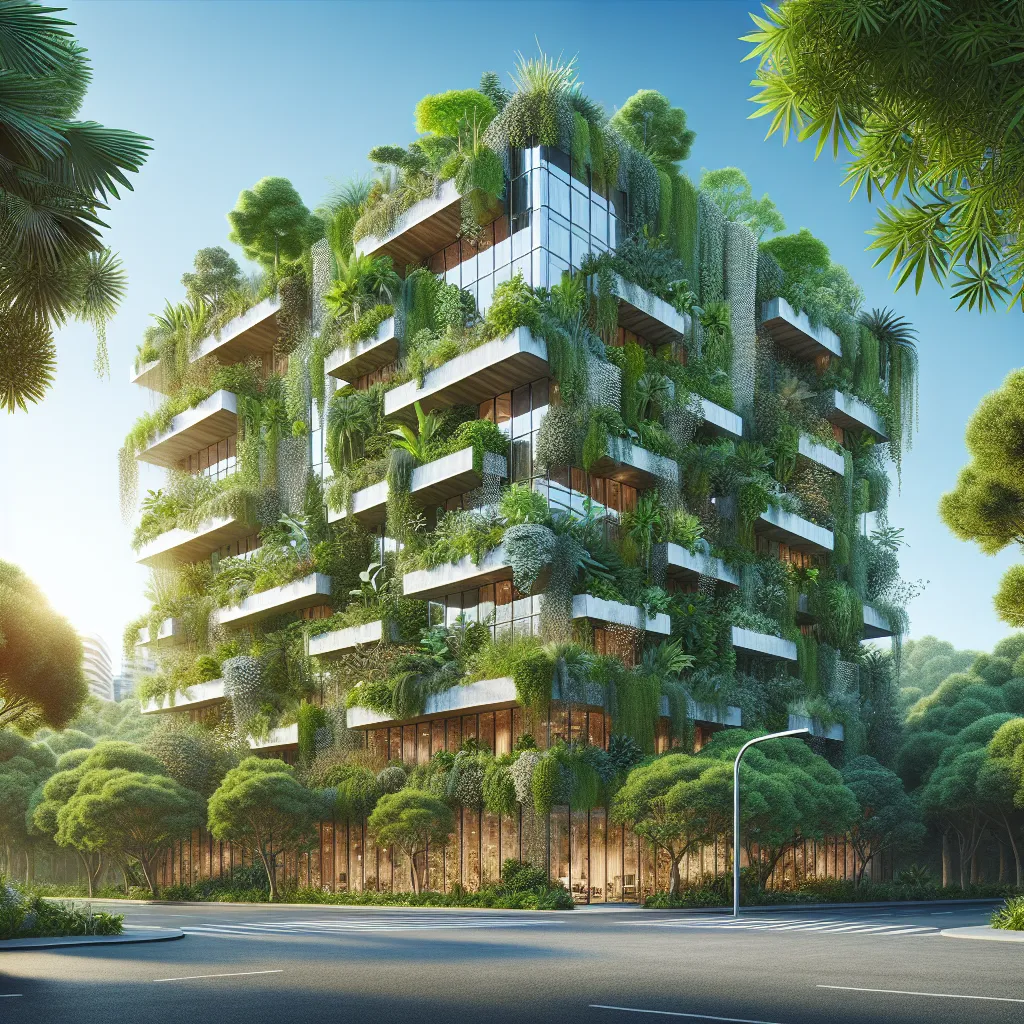Integrating Nature: The Key to Sustainable Building Design
Integrating nature into sustainable building design is essential for creating environmentally friendly and aesthetically pleasing structures. By incorporating natural elements such as green roofs, living walls, and natural lighting, architects and designers can harmonize buildings with their surroundings while reducing their environmental impact. Green roofs, covered with vegetation, not only provide insulation and reduce energy consumption but also absorb rainwater, decrease urban heat island effect, and create habitats for wildlife. Living walls, or vertical gardens, contribute to air purification, noise reduction, and improved aesthetics. Natural lighting, achieved through strategic placement of windows, skylights, and light tubes, not only reduces the need for artificial lighting but also improves occupant well-being and productivity. By integrating these nature-inspired features, sustainable buildings can minimize their carbon footprint, conserve resources, and enhance the overall quality of the built environment.
Innovative Materials for Eco-Friendly Construction
When it comes to sustainable building design, the choice of materials plays a crucial role in reducing the environmental impact of construction. Innovative materials for eco-friendly construction are gaining prominence due to their ability to minimize resource consumption and energy usage while maximizing efficiency and durability.
One of the key aspects of sustainable building design is the use of recycled and renewable materials. Materials such as reclaimed wood, recycled metal, and engineered wood products derived from fast-growing trees are not only environmentally friendly but also contribute to the reduction of waste and deforestation. These materials can be used for structural components, cladding, and interior finishes, offering both aesthetic appeal and sustainability.
Furthermore, the development of advanced eco-friendly materials like insulated concrete forms (ICFs), bamboo, and straw bales has revolutionized sustainable construction. ICFs provide excellent thermal performance and structural strength while reducing the carbon footprint of buildings. Bamboo, known for its rapid growth and regenerative properties, offers a sustainable alternative for various construction applications. Additionally, straw bales have been utilized as an effective insulating material, providing natural insulation and contributing to energy efficiency.
In the realm of eco-friendly construction, the integration of innovative materials goes hand in hand with technological advancements. The use of high-performance glazing, phase-change materials, and green roofs exemplifies the application of cutting-edge materials aimed at enhancing energy efficiency and environmental sustainability. High-performance glazing minimizes heat loss and gain, while phase-change materials contribute to thermal energy storage, reducing the reliance on mechanical heating and cooling systems. Green roofs not only mitigate the urban heat island effect but also improve air quality and stormwater management.
In conclusion, the incorporation of innovative materials is instrumental in advancing sustainable building design practices. By embracing recycled, renewable, and advanced eco-friendly materials, construction projects can achieve significant reductions in resource consumption and environmental impact while promoting long-term sustainability.
Maximizing Energy Efficiency in Sustainable Building Design
Maximizing energy efficiency is a cornerstone of sustainable building design, with the goal of reducing energy consumption and minimizing the environmental impact of structures. This approach involves integrating various design elements and technologies to create buildings that are highly energy efficient. One key aspect of maximizing energy efficiency in sustainable building design is the strategic use of natural light to reduce the need for artificial lighting. By incorporating features such as large windows, skylights, and light wells, designers can optimize the use of daylight, thereby reducing the reliance on electric lighting and lowering energy consumption.
Another important consideration in maximizing energy efficiency is the implementation of high-performance insulation and efficient HVAC systems. By utilizing advanced insulation materials and techniques, buildings can minimize heat loss in winter and reduce heat gain in summer, leading to significant energy savings. Similarly, employing energy-efficient heating, ventilation, and air conditioning systems can further reduce the overall energy demand of a building.
Furthermore, the integration of renewable energy technologies such as solar panels, wind turbines, and geothermal systems can greatly contribute to maximizing energy efficiency in sustainable building design. These technologies enable buildings to generate their own clean energy onsite, thereby reducing reliance on traditional energy sources and lowering carbon emissions.
In addition to these techniques, sustainable building design also emphasizes the importance of site orientation, efficient building layout, and the use of sustainable materials to further enhance energy efficiency. By considering all these aspects in the design process, architects and engineers can create buildings that not only minimize their environmental footprint but also offer long-term energy savings for their occupants.
In conclusion, maximizing energy efficiency in sustainable building design is crucial for creating environmentally responsible and resource-efficient structures. By incorporating various design strategies, technologies, and renewable energy solutions, designers can significantly reduce energy consumption and promote a more sustainable built environment.
Human-Centric Design: Creating Healthy and Sustainable Spaces
The art of sustainable building design goes beyond just creating environmentally friendly structures. It also involves human-centric design principles that focus on creating healthy and sustainable spaces for people to live and work in. Human-centric design takes into consideration the well-being of occupants, aiming to improve their quality of life while reducing the negative impact on the environment.
When implementing human-centric design in sustainable building practices, architects and designers prioritize features such as ample natural light, good indoor air quality, and access to nature. This is achieved through the use of eco-friendly building materials, efficient energy systems, and thoughtful space planning. By integrating these elements, sustainable buildings can contribute to the physical and mental well-being of their occupants.
Furthermore, human-centric sustainable design also addresses the importance of creating flexible and adaptable spaces that can easily accommodate the changing needs of the occupants over time. This approach aligns with the concept of sustainability by promoting longevity and reducing the need for extensive renovations or new construction.
In conclusion, human-centric design is an essential aspect of sustainable building practices, emphasizing the creation of healthy and adaptable spaces that prioritize the well-being of people while minimizing the environmental footprint.



